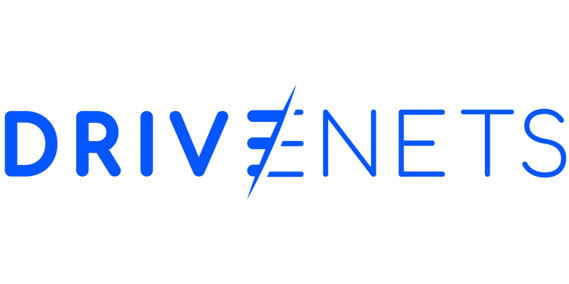Why Companies Should Pay Closer Attention to Internal User Data
With accelerated digital transformation, every employee’s output is intricately tied to their unique digital experiences. Regardless of a person’s job role or workplace, all employees must learn to master the growing portfolio of complex business software.
According to a recent Gartner Research report on hybrid work trends, employees today rely on 11 applications each day to perform their tasks on average. Over one-third of users (36%) require some proficiency to manage 11 to 25 applications daily, while the biggest power users (5%) need 26 applications or more to do their jobs.
Based on this overload of business applications, two-thirds of workers (66%) have reported moderate to high “digital friction” while using their software. For this reason, a new management discipline has emerged to focus on how technology can enhance the digital employee experience. Product analytics tools are being incorporated to improve the digital employee experience by delivering personalized experiences tailored to each employee’s abilities.
Access to product analytics allows IT leaders and product teams to measure the performance of digital experiences. Over time, they can analyze user patterns and gain valuable insights about user behaviors using this data. Accordingly, corrective actions can be offered directly within applications through in-app guidance tools that deliver a contextual experience for users or redoing parts of the application where users are struggling.
Analytics brings many advantages to IT leaders, product managers, and organizations as a whole. They are designed to recognize repeat user behaviors, preferences, and requirements and then apply those findings to diagnose user problems to overcome roadblocks. Analytics show how much time is spent on each activity to identify the points of failure where users abandon applications due to frustration or a lack of understanding about how to proceed or taking longer routes to complete a process.
Other advantages include mapping user flows, measuring feature adoption, and making digital processes more efficient. Using this data one can provide highly personalized recommendations and customized content based on each individual’s role, department, and background. Recurring pain points are eliminated as problematic workflows get smoothed out, leading to greater employee satisfaction and overall staff loyalty.
Benefits of Product Analytics Are Driving Strong Market Growth
North America has the largest regional market for product analytics today, but Asia-Pacific is expected to become the fastest-growing region over the next five years. The global product analytics market is forecast to grow at a Compound Annual Growth Rate (CAGR) of 15.9% to $16.69 billion in 2028, up from $5.93 billion in 2021, according to Fortune Business Insights. That healthy growth rate reflects the strengths of product analytics to support several critical business objectives for management.
Improving Worker Productivity: Each employee comes from a different background with different technical skills, which is why providing a customized approach is so important. Product analytics can uncover application features or processes that create the most problems for each individual, based on user errors or time spent. Enterprises can offer users relevant information and guidance by understanding how users navigate a process and adhere to necessary steps. This contributes to enhancing user productivity, improving enterprise efficiency, and reducing the impact of training gaps and errors.
Enhancing User Experiences: Keeping employees engaged and positive on the job is important for workforce retention, which lowers turnover and the need to onboard and train new staff. Analyzing user satisfaction involves examining feedback, usage metrics, adoption rates, and response times. This enables the personalization of employee experiences according to their individual preferences and needs. Gallup, a global research company, states that the current low workforce engagement leads to a global productivity loss of $8.8 trillion. By studying usage patterns, companies can pinpoint trends that signify high or low engagement levels. This data empowers the development of strategies to boost engagement, customize experiences, and optimize the overall employee journey.
Prioritizing Employee Success: By understanding digital technology utilization through analytics and user feedback, IT leaders can make better decisions about how to roll out new software tools and platforms. This strategic approach also helps with the development of additional software features, and with troubleshooting any barriers to adoption. In addition, access to analytics empowers leaders to prioritize technology utilization, aligning company strategies with goals. This data-driven approach enhances productivity by addressing user challenges, minimizing training gaps, and guiding strategic and investment decisions for optimized resource allocation and digital infrastructure improvement.
Reducing Technical Debt: A recurring obstacle to digital transformation involves employees who cling to legacy applications after newer versions have been launched. Such redundancies can produce data silos and integration problems due to poor visibility into usage patterns. Using analytics, CIOs and application owners can pinpoint modules with high user engagement in the product, allowing them to phase out the corresponding legacy modules. This strategic approach results in substantial cost savings by diminishing technical debt, with a more pronounced impact on enterprises with a dispersed and mobile workforce.
Effectively implementing a product analytics strategy to derive maximum value requires more than just adopting a tool. Enterprises must establish a well-defined strategy to understand how insights from product analytics enhance decision-making, improve user experiences, and empower cross-functional teams, including product managers, marketers, developers, operations and UX designers. The practical steps outlined for implementing a product analytics strategy provide employers with a roadmap to leverage data-driven approaches in product development, leading to more efficient and customer-centric outcomes.
Enterprises must harness the boundless potential of analytics to provide tailored and captivating experiences for their employees. Fully harnessing the capabilities of analytics is essential for companies aiming to showcase their leadership in transformative changes concerning how they attract, nurture, and retain their most valuable asset—their employees.
About the Author

Vara Kumar is the co-founder and head of R&D and pre-sales at Whatfix, a leader in digital adoption platforms (DAP). He co-founded Whatfix with Khadim Batti in 2014 with the vision of empowering individuals and organizations to work symbiotically with technology to maximize their potential. Based in the U.S., Vara leads the company’s strategy and vision for product development and adoptions, technology development, and innovation, helping accelerate successful integrations for partners and customers. Under his leadership, today Whatfix is a multi-product company driving innovation. He is passionate about building technology that users love.
Sign up for the free insideAI News newsletter.
Join us on Twitter: https://twitter.com/InsideBigData1
Join us on LinkedIn: https://www.linkedin.com/company/insidebigdata/
Join us on Facebook: https://www.facebook.com/insideAI NewsNOW




